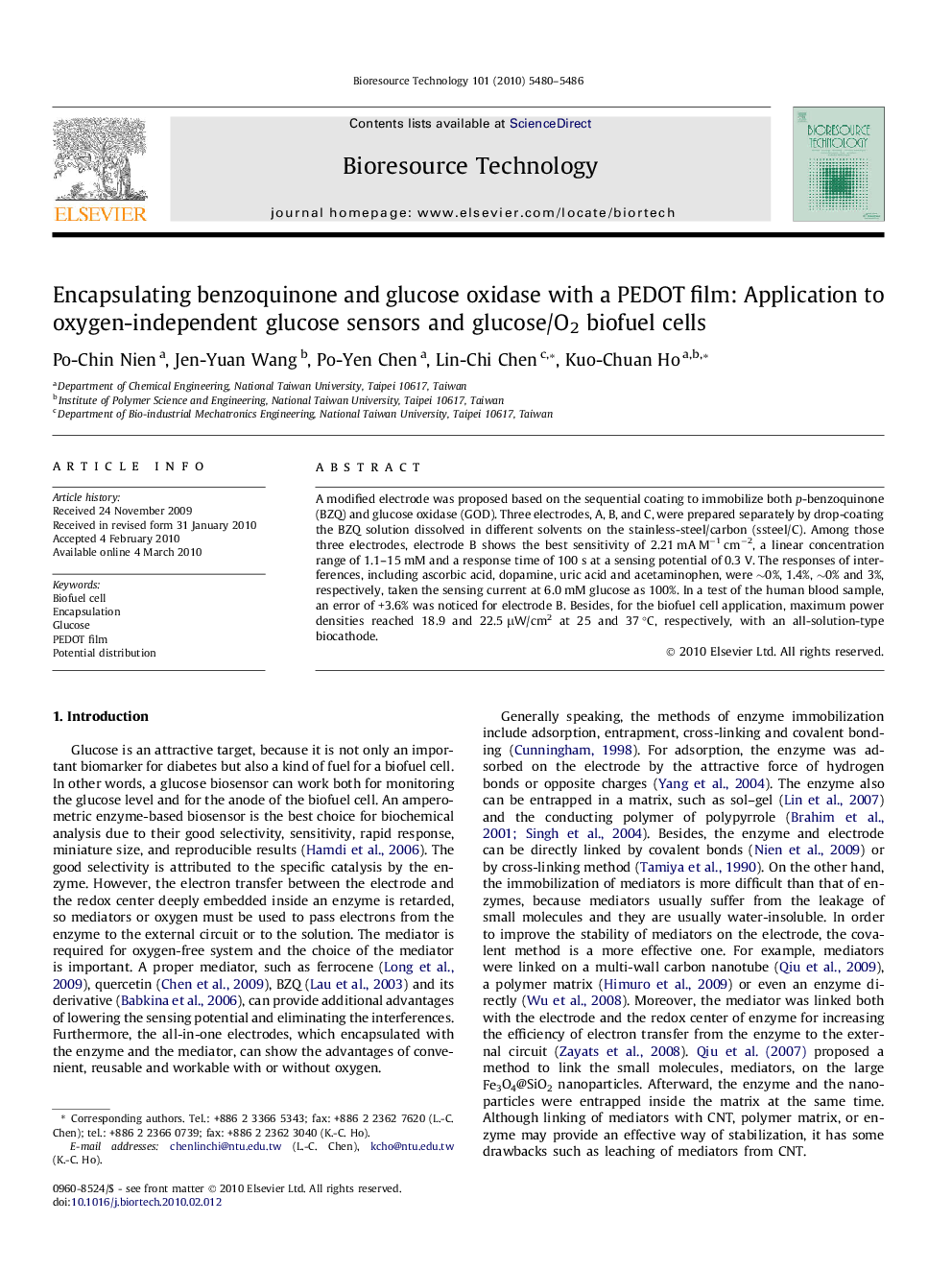| Article ID | Journal | Published Year | Pages | File Type |
|---|---|---|---|---|
| 682981 | Bioresource Technology | 2010 | 7 Pages |
A modified electrode was proposed based on the sequential coating to immobilize both p-benzoquinone (BZQ) and glucose oxidase (GOD). Three electrodes, A, B, and C, were prepared separately by drop-coating the BZQ solution dissolved in different solvents on the stainless-steel/carbon (ssteel/C). Among those three electrodes, electrode B shows the best sensitivity of 2.21 mA M−1 cm−2, a linear concentration range of 1.1–15 mM and a response time of 100 s at a sensing potential of 0.3 V. The responses of interferences, including ascorbic acid, dopamine, uric acid and acetaminophen, were ∼0%, 1.4%, ∼0% and 3%, respectively, taken the sensing current at 6.0 mM glucose as 100%. In a test of the human blood sample, an error of +3.6% was noticed for electrode B. Besides, for the biofuel cell application, maximum power densities reached 18.9 and 22.5 μW/cm2 at 25 and 37 °C, respectively, with an all-solution-type biocathode.
